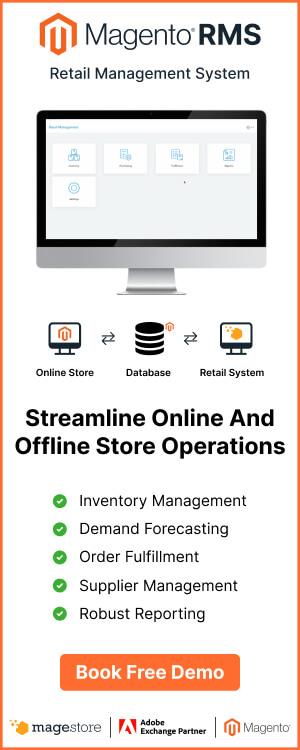Bill of materials (BOM) is a comprehensive, structured list of materials and components required to manufacture a product. A BOM displays information in a hierarchical format and includes details for each part like name, quantities, descriptions, and instructions for procurement and usage of these materials. Creating a thorough BOM is essential for an effective manufacturing and supply chain process, such as material planning, inventory planning, scheduling, and product costs. Therefore, understanding “what is a bill of materials” and how to create a BOM is fundamental for all businesses.
What is a bill of materials?

A bill of materials (BOM) is a blueprint for manufacturing a product. It’s an extensive list of raw materials, assemblies, items, components, and instructions to manufacture, produce, or repair a product. It is presented in a hierarchical format, where the highest level displays the complete product, next is the subassemblies, and the bottom level shows individual items and materials required for the production. This consists of details like names, numbers, descriptions, the quantities needed, and the steps to create the item.
For instance, a bicycle manufacturer wants to produce 2,000 bikes. Their bill of materials example can include all parts of a bike such as frames, wheels, chains, seats, handlebars, pedals, and cranksets, with details on the quantities and cost of each item.
Above is the overall knowledge of the bill of materials definition. Let’s come to the next question: Why should you care about it?
Why is bill of materials (BOM) important?

A bill of materials is the document that finalizes all materials needed, therefore playing a key role in accurate manufacturing. By identifying all materials and prices in advance, a company can ensure these items are available in-house at the right time and in the right quantity.
In a survey in Statista in 2022, 50% of risk management experts in the US considered the leading risk for a company to be business disruption, including supply chain disruption. This number increased from 39% in 2018, indicating the utmost importance of supply chain control for businesses. With proper planning, a bill of materials can minimize many risks like inventory delays, production downtime, shortage, or overage of materials, helping you stay within budget and on schedule.
A good BOM can ensure consistency for the entire production process. Following the same BOM throughout production means the goods will meet the safety and other standards. In addition, in case of a product failure, a BOM is crucial to track where and when the error happens. It identifies the parts and components that are potential causes to investigate.
With these benefits of BOM, you should apply a clear and detailed BOM for your product manufacture. It helps you control the full process and ensure the final products will meet their specifications.
Who uses a bill of materials (BOM)?

With its large scale, creating a BOM often demands effort from multiple functions within the company. Multiple positions participating in creating BOMs can include designers, engineers, procurement officers, materials managers, and manufacturing managers.
Similarly, different departments in the company can be primary users of BOMs, depending on the types of BOM. For example, design and engineering staff typically use engineering BOMs, while the manufacturing team uses manufacturing BOMs, and sales executives mainly use sales BOMs. We’ll cover the details of these BOMs in the upcoming section.
Components of a bill of materials

With the basic understanding of what is a bill of materials, here are the most common components of BOMs:
1. BOM level
This is a unique number assigned to each part that shows where it fits in the BOM hierarchy. For example, a BOM for a vehicle has each major component marked as a level, like engines, doors, drivetrain. Each of these components is broken further into sublevels, such as an engine consisting of pistons and crankshaft, and the pistons including piston rings in a lower level.
2. Part number
Part number identifies a specific material or component, allowing anyone involved in the production process to easily identify what it is. You should establish a logical numbering system that includes some description of each item before assigning numbers. This is called an intelligent number. For instance, an intelligent number for wire can be “Wire_001”.
Non-intelligent part numbers don’t have descriptions but still work. In either way, be consistent with your numbering scheme and align all teams to follow.
3. Part name
Similar to part number, part name is unique for each component, helping users identify each part or quickly assemble the product.
4. Phase
Phase refers to the lifecycle stage of each part. Examples are “in production” or “in design”. This helps track progress and create realistic project timelines.
5. Description
Descriptions provide further detail on each part. Writing clear descriptions will be useful when you need to discern between parts that look similar. For example, you may need different types of screws for your products, so it’s better to clearly distinguish them in the BOM.
6. Quantity
The quantity indicates how many of each component is required in an assembly or subassembly. Getting the correct quantity will guide purchasing and manufacturing activities.
7. Unit measure
You need to assign a unit of measure for each part, such as inches, feet, pounds, etc. Specifying the right measure will ensure the procurement team gets the right quantities to provide materials for the production line and help them know how to measure a BOM.
8. Procurement type
Procurement type refers to how the BOM components are acquired, for example: Producing internally, purchasing from suppliers, or having it manufactured by subcontractors. You can read our article on procurement vs purchasing to understand more.
9. Reference designator
If your products need printed circuit board assemblies (PCBAs), you should enclose the reference designators that show the location of each part on the circuit board in your BOM. This information will help you save time and avoid confusion later.
10. BOM notes
The notes section is where you attach other useful information to keep anyone interacting with the BOM on the same page.
3 types of a bill of materials

There are 3 common types of BOMs that fulfill different purposes:
Manufacturing bill of materials (MBOM)
As its name indicates, a manufacturing BOM is used during the manufacturing process. It identifies the parts and assemblies required to produce a shippable finished product. It determines the number of items and materials that must be purchased and at which stage they need to be available to meet the production schedule.
Besides information on individual parts, an MBOM also includes details on the components that need processing before assembly and demonstrates how various parts relate to one another in a product. An MBOM is typically shared with several systems involved in procuring and constructing the product, such as an enterprise resource planning (ERP) system and a material requirement planning (MRP) system.
Engineering bill of materials (EBOM)
An engineering BOM, developed by engineers, is used when you need to design a product.
This BOM comprises a technical or mechanical drawing of the product, which includes the items, components, subassemblies that define a finished product’s original design. Since the designing process goes through many revisions, it is common for a product to have many EBOMs.
To develop EBOMs, engineers often use computer-aided design (CAD) software or electronic design automation (EDA) tools to support the creation of EBOM.
Sales bill of materials (SBOM)
A sales BOM defines the product in the sales stage, where it is ordered by a customer, before assembly. An SBOM lists the finished products and components required to develop according to customer’s requests. It is typically managed by a sales team and appears in sales records. Based on the SBOM, the engineers and production team can have further solutions to create the exact product.
7 steps to make a bill of materials

Creating an accurate bill of materials is vital for all production activities later. Here are the steps you should follow:
- Identify which information to include: Decide how detailed your BOM should be. For example, do you want to include consumables like glue or wire in your BOM? These are indirect materials and whether to include them or not depends on how you control your inventory.
- Centralize the management of the BOM: For the BOM to remain accurate and consistent across different departments, you should have the same information system that aligns everyone to the BOM. Updating the BOM is also easier when there’s a single record.
- Decide who’s in charge of changing the BOM: You should limit the number of editors to reduce the risks of mistakes.
- Decide the way to track revisions of the BOM: Since BOMs can be revised many times, it’s better to ensure all changes are tracked to make the most out of BOMs. What to track includes the change itself, who makes the change, when, and why the change is needed.
- Select the BOM presentation: How you present your BOM can be single- or multi-level, depending on how complex your product is.
- Listing all materials needed: Create the details by listing all materials, parts, and components that will make up the product. Make sure to be specific on the material number, quantities, descriptions, etc.
- Refine the list: Continue to improve your list. After many rounds of revision, the list may grow and change over time. You can then find out the best version for your BOM gradually.
That’s all you need to understand what a bill of materials is. Let’s take a closer look at how you can enhance your BOMs for your business.
Leverage BOMs with an ERP and inventory management system

A precise, rigorous BOM improves decision-making and facilitates efficient production processes. However, many companies are struggling with preparing and managing BOMs manually since it’s time costing and error-prone.
Applying software such as an inventory management or ERP system can help automate the process. You can centralize all data, track the stages of your materials, optimize inventory and procurement, as well as support the planning and updating of your BOMs. This system will be the only source for documenting and controlling the entire product record, thus ensuring all engineering, procurement, quality, and manufacturing teams collaborate smoothly. Therefore, you can identify any discrepancies and prevent siloed communication.
Related questions
1. How is a BOM structured?
There are 2 most common methods of presenting a BOM:
- Single-level BOM: This is usually used for simple products, where each assembly or subassembly is shown only once with details of the quantity required to make the product.
- Multilevel bill of materials: This is suitable for complicated products that can be broken down into many levels of components. It specifies greater details of the total materials needed, as well as the relationship between parent and child product, or between assemblies and subassemblies.
2. What does BOM display mean?
You can display a BOM in 2 ways: An explosion display and an implosion display. A BOM explosion displays the assembly at the highest level and is broken down into lower levels of its components and parts. On the other hand, a BOM implosion displays the connection of various particular parts at the lower levels that make up an assembly at the higher level.
Conclusion
With a well-defined BOM, companies can accurately plan purchases of raw materials and their estimated costs, thus gaining better inventory control, ensuring a robust production process, and reducing waste. You can consider a customized solution to support you in creating and managing BOMs more efficiently, which frees you from manual work and human errors. In this way, you can maintain accurate records, improve your supply chain efficiency, and in turn, save you cost and increase your bottom line.














